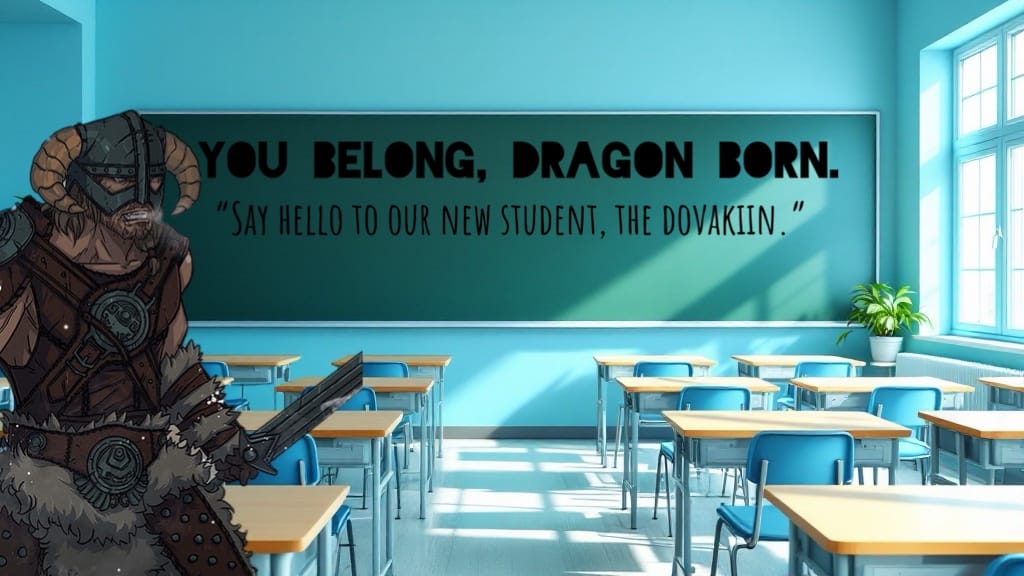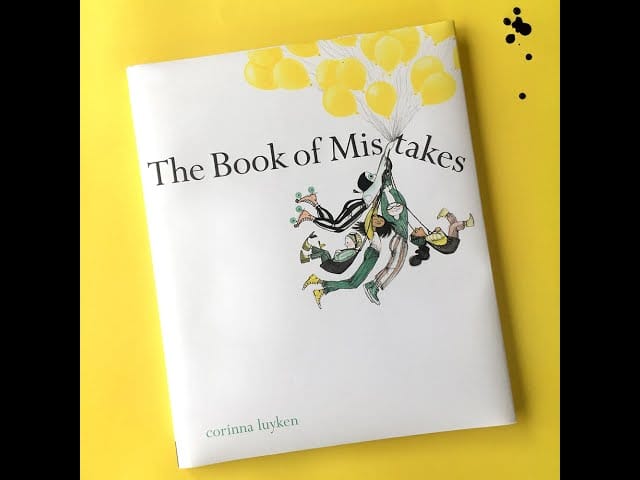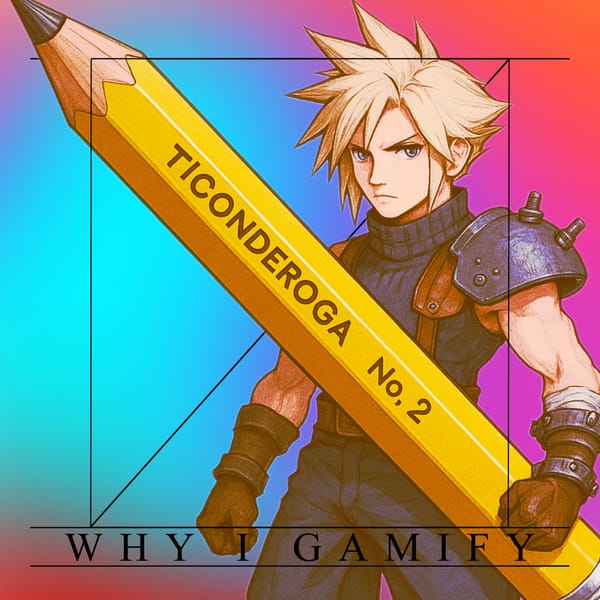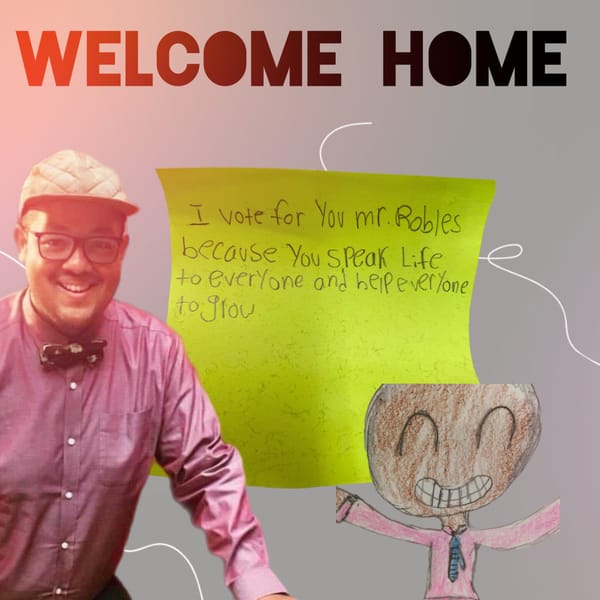How I Build Belonging Before I Build Curriculum
A student cannot claim a destiny in a room that doesn’t claim them back.

Or, What Cleaning a Nissan Pathfinder taught me about teaching.
① Opening Vignette (Washington Heights and the Maternal Gift Economy at 860 Riverside Drive)
I grew up in a Washington Heights building that was its own little universe, its own early syllabus in the gift economy before I even had the language for it. Nothing in our building ever stayed in one apartment; everything breathed across floors. You ran to 6G for ice and toilet paper, to 2B to play Madden on the Sega Genesis while somebody’s cousin shouted at the screen, and to 6A where my mother could trade a single cigarette for two eggs because the morning demanded them. There was always a “special guest” uncle snoring gently on the couch for a week or six. Every adult knew every kid’s name. And every kid knew which door would open for them.
Belonging wasn’t a concept, it was in the air. It was on cruise control.
I didn’t know then that those hallway lessons would become the blueprint of how I teach in Brooklyn: how I try to build a room where every kid feels like they live on the same floor, where laughter spills into the hallways, where awkward beginnings and slow courage get honored like holy rites. My mother and Tío Augie taught me you share what you have. Dr. Watt, our Physics teacher and house counselor, taught me you can communicate care without saying it out loud. Washington Heights gave me a language: before anything else, make people feel like they have a home.
② The Lesson / Framework (Belonging as Materia)
By the first week of school, the room fills with names that tangle in my mouth, laughter that arrives in bursts, and that smell of Axe spray and a onions mixed middle school cocktail of boldness and fear. Kids pretend not to care but their eyes scan everything: Will this adult see me? Will this room hold me? Can I be myself here?
I’ve learned that if I want vulnerability, I have to go first.
If I want their courage, I have to model mine.
If I want community, I have to make the first offering.
So I walk in on Day One with epic video game battle music humming through the speakers — the kind that makes a thirteen-year-old sit up straighter because apparently we’re in a movie now. My teaching is part theatre, part ritual, part abolitionist practice. And all of it is rooted in belonging.
Abolitionist teaching isn’t just the refusal of punishment — it’s the refusal to let any child feel like an exile. It is choosing to design a space where humanity is the curriculum and love is the architecture. Before I ask students to analyze a text, argue a claim, or write a CER paragraph, I teach them what my uncle taught me with his old Nissan Pathfinder: you let young people into your life, you let them watch you drive, you take trips to the car wash together, you explain the dials — and then one day, you hand them the keys. Pathfinder. What a name. What a metaphor for every young traveler who steps into my classroom.
Octalysis says that Core Drive 1 — epic meaning & calling — is the strongest motivator humans know. Skyrim gets it right: you start as an ordinary prisoner with an extraordinary destiny written in your own blood. But your destiny doesn’t matter until the main character cultivates a world that’s worth saving, unless the space feels safe, unless belonging is the fuel powering every quest. A student cannot claim a destiny in a room that doesn’t claim them back.
Belonging is the temple. Everything else is scaffolding.
③ The Practice / How-To
Here’s how I build belonging before building curriculum: it’s rituals, scripts, circle prompts, CER tasks, powerful read alouds, and classroom magic straight from Washington Heights to Brooklyn Humanities 7.
1. The Votive Candle Writing Ritual (UDL + SEL)
Six weeks in, a small constellation of battery votive candles flickers on each cluster of desks. Students walk in and whisper, “Wait… are we writing by candlelight?” Shock, awe, wonder.
Script:
“Y’all, I can’t write here, it looks like a bomb shelter. I can’t write in a dungeon. If we’re going to identify as writers, we deserve a soft writer’s ambiance. Human beings deserve calm. And this is our space. In the Lion King, Simba couldn’t look at his dad’s reflection in the water if the land was noisy.”
Why it works: It grounds anxious kids, slows the emotional tempo, and signals that writing isn’t a punishment, it’s intimacy with one’s own mind.
Why it sometimes doesn’t: Students are going to hold the candles, play with them, and drop them on the ground. There’s always that one future engineer who likes to tinker with things, take a mechanical pencil apart, then put it back together. The world is their maker’s space. Label the votive candles, and give them affectionate names. Then you can say goofy things you never imagined you were going to say in this lifetime, like, “Hey, Mateo, leave Alduin on the center of the table so everybody can share the light.”
2. The Morning Circle: “Belonging Begins With a Name”
Procedure:
Students stand or sit in a circle.
I share the vulnerability first: a nickname that stuck, a name I outgrew, or the way my building shouted “Robles!” down the hallway like a trumpet. There’s nothing like the love you get from former students who gave you gray hairs.
Restorative Prompts:
- “Tell us the story of your name. Who gave it to you?”
- “What does belonging feel like in your body?”
- “Where in your life do you feel most ‘home’ right now?”
One political classroom spark:
- “Who in our world gets to belong automatically — and who has to earn it?”
Students earn 5 XP for speaking in circle, not for “quality” but for bravery.
3. Read-Aloud: The Book of Mistakes
This beloved text becomes our shared mirror.
Teacher Script:
“Mistakes aren’t evidence of failure — they’re evidence of humanity. Belonging means we celebrate the scribbles, not hide them.”
Reflection Questions:
- “Which mistake in the book felt closest to you?”
- “What does the artist teach us about transformation?”
- “Which ‘mistake’ in your life actually shaped you into someone stronger?”
Students journal by candlelight for 3–5 minutes. Do this early, then all the mistakes we make all year become ok as well.

4. Guild Mechanic: The Pathfinder Badge
Inspired by Tío Augie’s Pathfinder.
Purpose: To honor kids who show leadership in helping others belong.
How to earn:
- welcoming a new student
- noticing someone alone
- tagging in during group struggle
- offering gentle correction
Badge Description:
A Cloth, Stained-glass compass over a Nissan-style wheel. Title: “Pathfinder: Builder of Belonging.”
Give it sparingly so it doesn’t lose its luster. Slap it on your morning meeting slides to honor the kiddo who earned it. Now you’re more than a teacher, you’re a gardener, and the initial pathfinder students are where you begin cultivating a loving classroom culture.

5. CER Tie-In: Why Belonging Comes First
Claim:
Classrooms that build belonging before curriculum help students learn more deeply and take greater intellectual risks.
Evidence Options:
- In The Book of Mistakes, creativity grows when the character feels safe exploring errors.
- Octalysis Core Drive 1 shows that epic meaning activates motivation — but only when basic belonging is present.
- Washington Heights communal life illustrates how shared care resources create thriving learning environments.
Reasoning:
When students experience belonging, their nervous systems relax, their curiosity activates, and their willingness to revise, argue, risk, and create expands. Belonging isn’t an “extra”; it is the foundation that makes rigorous thinking possible.
④ A Warm, Prophetic Closing
Maybe the real curriculum is the room itself: the hush that settles when kids journal by candlelight, the way a student in Week One leans over to whisper, “You good?” to a classmate they barely know, the circle where a shy kid finally names their story aloud. Teaching, at its highest form, is remembering that every child arrives as both prisoner and prophecy. They are constrained by the world but carrying destiny in their bones.
I think back to Washington Heights, to the building where everyone belonged because everyone belonged to everyone. I think of Tío Augie, steering that old Pathfinder like it was a chariot. I think of Dr. Watt, whose quiet love taught us that belonging doesn’t need announcements, just presence.
So when I greet my students at the door each day, I’m not building a curriculum.
I’m rebuilding a neighborhood.
I’m re-opening the doors of 6G, 4B, 6A.
I’m offering the room the same gift my mother offered our hallway: a place where nothing is wasted and no one falls through the cracks.
May every child who enters my classroom feel chosen, because they are.
Because every child deserves a classroom designed for loving.




